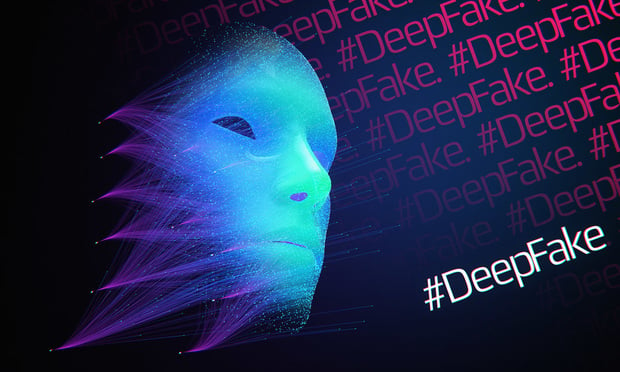Features

Supreme Court Set to Address Procedural Inconsistencies and Claims of Unconstitutional Vagueness Attributed to CAFC
The U.S. Supreme Court is set to commence its term on October 6. Among the cases it will review are several appeals concerning copyright and trademark law. One notable case seeks to address procedural inconsistencies and claims of unconstitutional vagueness attributed to the U.S. Court of Appeals for the Federal Circuit.
Features

WTF? Round Two: The Federal Circuit Grants Brunetti (and Trademark Owners) a Reprieve
In August, the Federal Circuit issued a surprisingly self-critical ruling in the long-standing dispute between Erik Brunetti and the USPTO over Brunetti’s efforts to register the term F*CK for a wide variety of goods and services. The Federal Circuit concluded that the Board’s decision in In re Brunett lacked sufficient clarity and therefore vacated it for further proceedings, which although facially unremarkable, may not only prove to be a boon to Brunetti, it may also be highly beneficial to many trademark owners who have been forced to wrestle with failure-to-function refusals.
Features

AI Against Counterfeits: How Smart Technology Is Reshaping Brand Protection and Platform Accountability
As AI becomes more sophisticated at detecting fakes, it is not just changing how brands protect themselves — it has the potential to change the legal framework for determining when platforms themselves might be held responsible for the counterfeits sold on their sites.
Features

Post-SCOTUS District Court Ruling In Jack Daniel’s v. VIP Products Reshapes Trademark Dilution Jurisprudence
For companies developing novelty products, advertising campaigns, or brand-related parodies, this case underscores the importance of reviewing both confusion and reputational risks. For rights holders, it affirms that parody is not a license to defame a brand.
Features

OpenAI Gets Summary Judgment In Trademark Battle With Open Artificial Intelligence
A trademark battle that pitted technology giant OpenAI against a company known as Open AI (note the space between the terms) has resulted in a summary judgment that has ordered the smaller enterprise to cease use of the name and its prized internet real estate, open.ai.
Features

Successful and Enforceable Brands Connect with the Consumer: Lessons from a Recent 10th Circuit Decision
Protectable rights are created the same way a successful brand is established — linking your Mark and your company’s offering in the minds of the consumer is a must. The good news? Regardless of your company’s size or marketing budget, this necessary connection can be achieved.
Columns & Departments

IP News
“Not Merely Monkey Business”: The Bored Ape Case and NFT Branding in the Ninth Circuit
Features

The Suspension Bridge Effect: Why Trademark Attorneys Must Protect Entire Brand Systems, Not Just Individual Marks
In brand protection, as in bridge engineering, the strength of brand differentiation (trademark distinctiveness) depends on the integrity of each supporting cable. When one snaps, the question is not only whether you can fix that component, but also whether the whole structure will hold together long enough for the repair crew to arrive.
Features

Tea Leaves Tell Tales: Jury Awards $2.36 Million for Bigelow’s “Manufactured in the USA 100%” Label
On April 8, a California jury found that R.C. Bigelow, Inc., the well-known manufacturer of Bigelow teas, intentionally or recklessly misled consumers by claiming that some of its teabags were “Manufactured in the USA.” The price for this mislabeling was steep, with the jury awarding the class action plaintiffs $2.36 million.
Features

Beyond the Logo: How AI Complicates Trademark Protection In the Digital Age
Today, building brands solely on the promise of a different product or service has become unsustainable. Any “new and improved” feature or benefit is quickly eclipsed by competitors. Consequently, brands signal category superiority not through rational claims, but by reinforcing a distinct persona — a “ness” comprised of distinguishing traits and behaviors that form an ownable brand essence difficult for competitors to replicate.
Need Help?
- Prefer an IP authenticated environment? Request a transition or call 800-756-8993.
- Need other assistance? email Customer Service or call 1-877-256-2472.
MOST POPULAR STORIES
- Use of Deferred Prosecution Agreements In White Collar InvestigationsThis article discusses the practical and policy reasons for the use of DPAs and NPAs in white-collar criminal investigations, and considers the NDAA's new reporting provision and its relationship with other efforts to enhance transparency in DOJ decision-making.Read More ›
- The DOJ's Corporate Enforcement Policy: One Year LaterThe DOJ's Criminal Division issued three declinations since the issuance of the revised CEP a year ago. Review of these cases gives insight into DOJ's implementation of the new policy in practice.Read More ›
- Lionsgate GC Who Resigned Without 'Good Reason' Got Severance PayAdd another plot twist to the storyline surrounding Corii Berg, who unexpectedly quit as general counsel of the film studio Lionsgate in December, even though he was under contract through June 2023.Read More ›
- Join Us For a Twitter Chat: Do We Need Offices Anymore?When we think about how the COVID-19 pandemic has changed the legal industry, one (frankly huge) question comes to mind: Do we really need offices anymore? As many are still working from home, meeting with clients over Zoom and some even conducting jury trials online, life of commuting to and from work seems farther away than February.Read More ›
- The DOJ's New Parameters for Evaluating Corporate Compliance ProgramsThe parameters set forth in the DOJ's memorandum have implications not only for the government's evaluation of compliance programs in the context of criminal charging decisions, but also for how defense counsel structure their conference-room advocacy seeking declinations or lesser sanctions in both criminal and civil investigations.Read More ›
